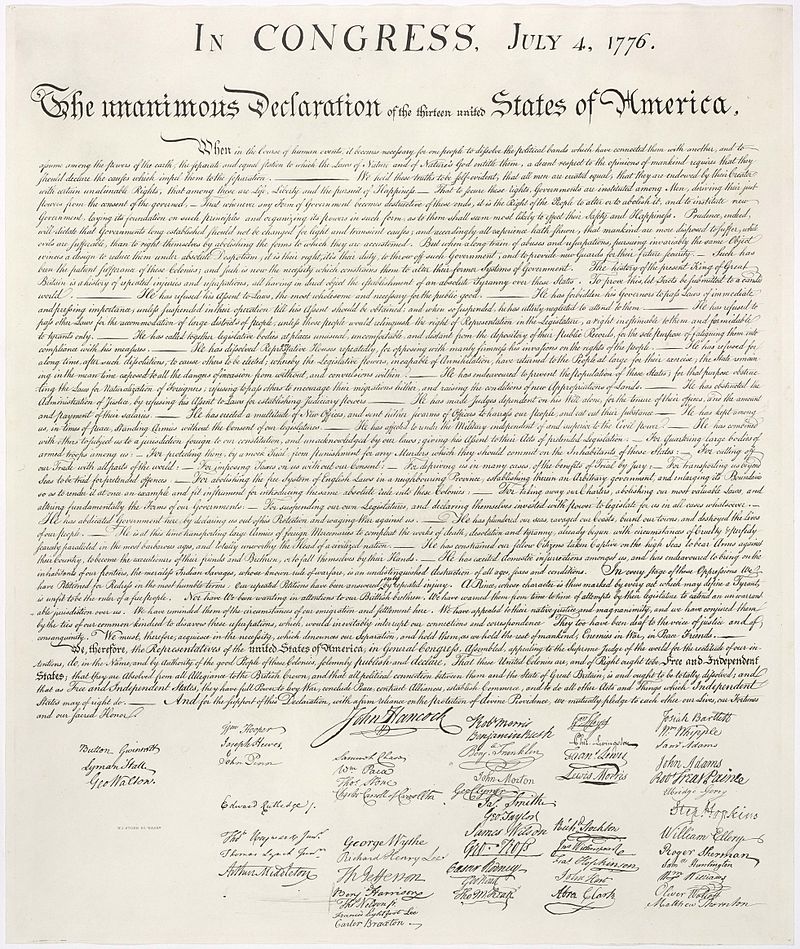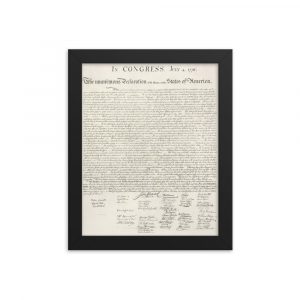Great Britain had been at war with the colonies for over a year in June/July, 1776 when the Declaration of Independence was created. It was ratified on July 4, 1776. The idea was a result of Britain controlling the new colonies. Many colonists argued that Parliament had no right to tax them and that Britain, overall, should not be controlling them.
Thomas Paine had not been in the colonies for long when he began arguing for the colonies’ independence. He fought in favor of the U.S. become a Republic. Paine published a pamphlet, Common Sense, that did not have much effect of Congress, but got colonists thinking. The debate of the colonies become a Republic only grew with the publication of his pamphlet. Support only grew when colonists learned of King George III hiring German mercenaries that were to be used against the Americans.
Delegates from each of the thirteen colonies had been elected to Congress. However, the delegates did not have the right to declare the colonies’ independence. Even a few colonies had prohibited their elected delegates from voting towards independence. For the delegates to be able to vote for independence, one of the colonies had to instruct it. None of the colonies were willing to do this yet. So, the delegates began to revise the Congress instructions.
As congress revised its rules, may colonists showed their support of separating from Britain. On May 4, 1776, Rhode Island became the first colony to separate from British rule. On May 15, congress passed a preamble that explained the purpose of the Declaration of Independence. John Adams wrote the preamble, and was very proud of it as well. Four of the middle colonies had voted against the preamble, but it was passed.
Delegates were not yet authorized to vote for independence from Delaware, Maryland, New Jersey, New York, and Pennsylvania. These delegates even threatened to leave if Lee’s resolution was passed. Lee’s resolution stated, “Resolved, that these United Colonies are, and of right ought to be, free and independent States, that they are absolved from all allegiance to the British Crown, and that all political connection between them and the State of Great Britain is, and ought to be, totally dissolved.” Congress voted that further discussion of Lee’s resolution would be postponed for three weeks. It was then decided by Congress that a committee should prepare a document that would announce their independence. By the end of June, all colonies had authorized their delegates to vote for independence, with the exception of New York.
The Committee of Five was appointed by Congress on June 11, 1776. The committee consisted of Benjamin Franklin, John Adams, Robert R. Livingston, Roger Sherman, and Thomas Jefferson. Jefferson wrote the document. On june 28, the committee showed “A Declaration by the Representatives of the United States of America, in General Congress assembled,” to Congress. For a few days to come, Congress edited the document.
On July 1, a few delegates argued against the declaration being passed. But when each Colony voted, majority ruled towards independence. Congress voted in favor of independence as well. On July 4, 1776, after a few days of revising the document, it was passed.
Thank You For Reading This Far
As our gift to you for reading up on the Declaration of Independence we are offering you an exclusive discount on our beautiful framed copies of this founding document of the United States. Take an extra 20% off our sale price using the discount code “READER” and hang this historic document on your wall:



